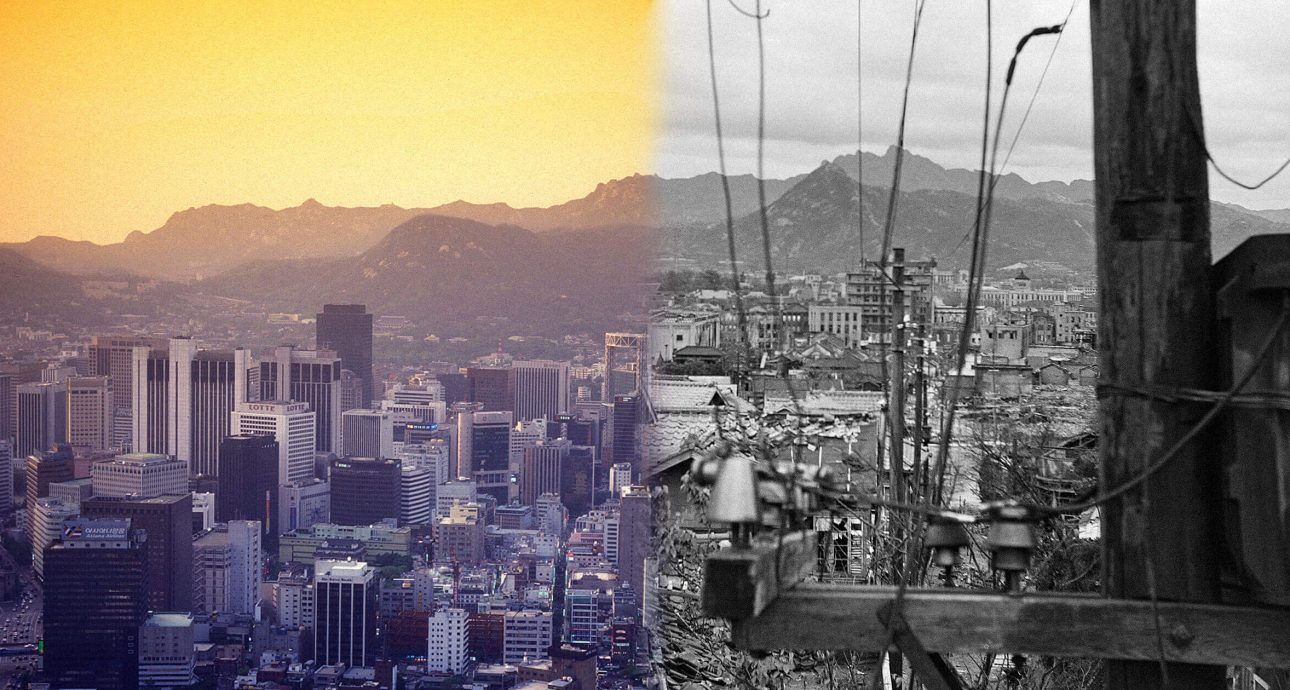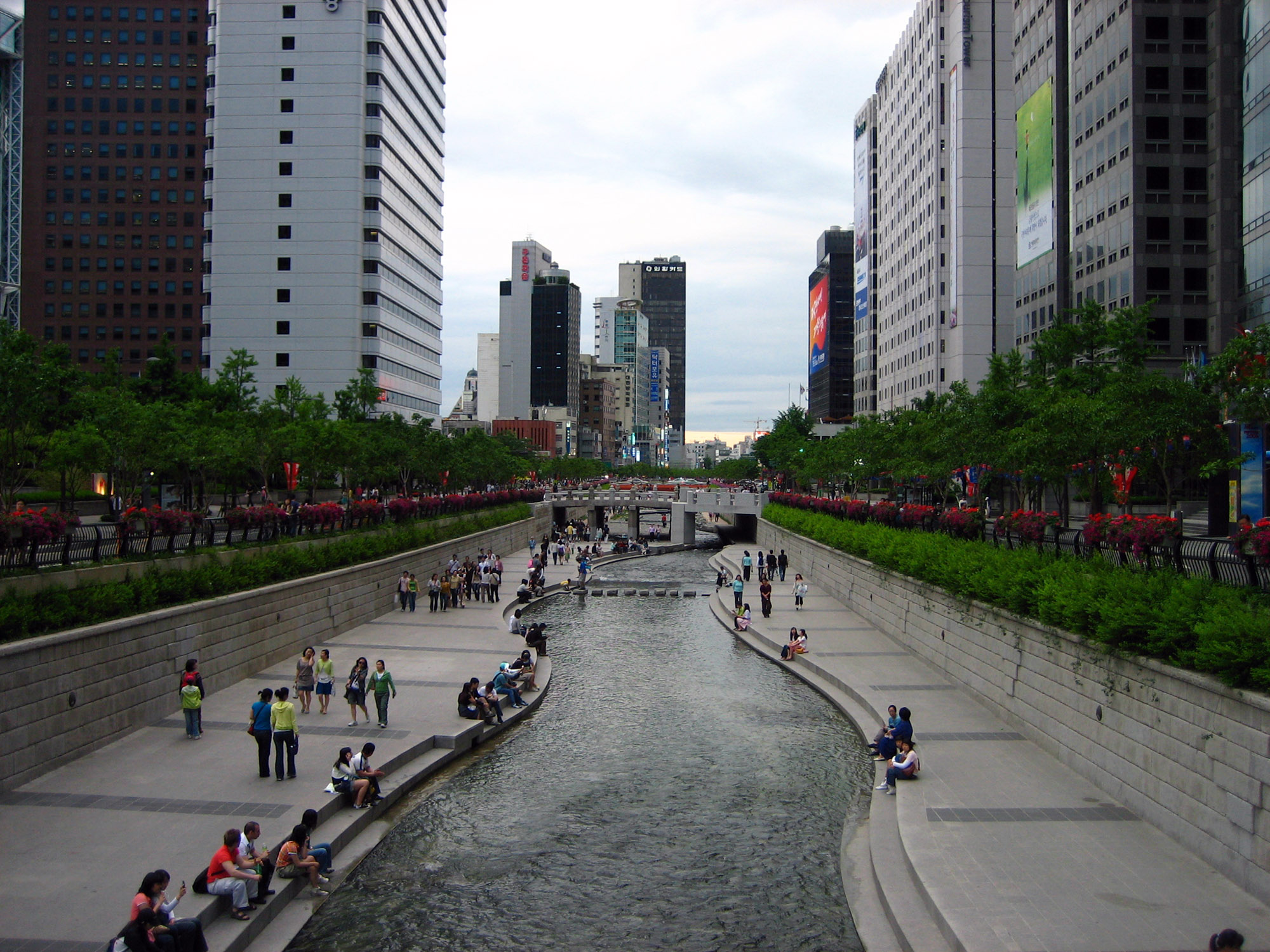
Right under the Enemy’s Nose: How Seoul Became a Frontline Megalopolis
Seoul had been preparing for war since its inception, and for a good reason. In the early 20th century alone, the city survived three military conflicts. During the latest one, the Korean War of 1950–1953, North Korean troops occupied the frontline city thrice. Over 10,000 buildings in the city were damaged by urban warfare and shelling.
Before launching the post-war reconstruction of the city, the South Korean government had to tackle two problems: secure funds and ensure the city residents’ safety (nominally, South Korea is still at war with North Korea).
Dr Hyung Min Kim, a Senior Lecturer in Urban Planning at the University of Melbourne, told Bird in Flight how officials talked landowners in Seoul into helping with the capital’s restoration and why being close to the frontline didn’t keep it from growing into the megalopolis it is today.
You study “healthy cities”. What is that about?
It’s simple: healthy cities make it convenient for residents to spend time outdoors and move around on foot, by public transport, or by bike.
Is Seoul a healthy city?
The authorities are trying to make it one, but they have yet to succeed. After all, Seoul still depends on cars.
What was Seoul like before the war?
It was a big city that wasn’t exactly quiet. Before the Korean War, Seoul was touched by the Pacific War, which later grew into World War II.
The industrialization of Seoul was launched by the Japanese, who colonized the Korean Peninsula in the early 20th century. They were also the ones who promoted the country’s urbanization. Since the end of the 1930s, Seoul was gradually becoming what it is now. Before that, it had a street network that lacked any structure and low-rise buildings from brick and wood.
How much was it damaged by the war?
The city suffered severe destruction: most buildings were damaged, and a tenth of its development was razed to the ground.
During the Korean War, Seoul, the capital of South Korea, was one of the main targets for North-Korean troops. A third of the million-strong population of the city was trying to evacuate. It was a hard thing to pull off. With only two bridges leading to Seoul, the South Korean government eventually had to blow up both to hamper the enemy’s access to the city.

Women and children looking for wood debris in the centre of Seoul in 1950. Photo: Capt. F. L. Scheiber / U.S. Army official Korean War image archive / Wikimedia Commons
What were the first steps in the city’s reconstruction?
The reconstruction started when the government agencies returned to the city after being evacuated south for the duration of hostilities.
The shortage of funds was one of the main problems the authorities had to tackle. The international community provided a part of the money, and the rest was raised through the land readjustment mechanism.
What is that?
This mechanism helps countries that cannot afford to rebuild. It was used for the first time in Germany in the early 20th century and later in Japan.
There is a mechanism that helps countries start rebuilding even if they are short of money.
The land readjustment mechanism works as follows. Landowners are asked to give a part of their land to the government. The government then builds infrastructure (roads, sewage system, kindergartens, etc.) on part of that land and sells or leases out the rest. This way, the authorities get money for the reconstruction and land owners — infrastructure near whatever land they still have and, consequently, its higher value.
What were the principles that governed Seoul’s reconstruction?
Seoul was urbanizing and industrializing, so city-builders adhered to modernist ideas. They constructed tall buildings and wide avenues, disregarding pedestrians’ convenience. For instance, in the 1960s, the authorities covered up the Cheonggyecheon stream with concrete to build an elevated highway in its place and moved the people who lived along it to another part of the city. Later, the situation changed. The highway was removed. The stream underwent revitalization, and a public space was set up along it. However, at the time, cars were the priority.
The authorities built high-rises according to global best practices. Sewoon Plaza — a long, linear building stretching from north to south — was constructed under the influence of Le Corbusier’s ideas. Entire squat settlements were torn down to make way for new development.

The revitalized Cheonggyecheon stream. Photo: Deepak Bhaskari / Flickr

The Sewoon Plaza building is 1 km long and 50 m wide. It was constructed in the place of the 1930s firebreaks. After the Korean War, a squat settlement with a high crime rate popped up here, which was torn down to build the plaza. Photo: Namu Wiki

Sewoon Plaza in comparison with Seoul’s traditional quarter. Photo: Namu Wiki
Did the government have a reconstruction plan of the whole city?
It didn’t. Layouts and projects were drafted for each district separately.
I’ve read that the reconstruction was carried out to prepare the city for a potential war. Is that true?
Yes, the high probability of future war was factored in. Seoul is close to the North Korean border and thus can easily come under shelling. Some even suggested moving the capital to another city, but it never happened. Even now, no construction projects are carried out in the country’s north for security reasons.
In the grand scheme of things, all historical cities were built to survive wars. Seoul is no exception. It was a fortress city in Medieval times.
All historical cities were built to survive wars. Seoul is no exception.
How did the city prepare for the war?
Additional evacuation routes were created in schools and the city metro. Greenery was planted around Seoul and in the mountains. Those green zones were to help people stealthily leave the city in the event of danger. Besides, the military could set up their positions there. Seoul has many underground spaces, like shopping centres, car parks, etc. City residents can shelter there if needed.
However, all of those date a while back. Over the past forty years, no additional installations were built to prepare for war.

Seoul map. Some sources allege that Seoul’s street network was never streamlined to make the city harder to capture. Image: Depositphotos

A former highway converted into a pedestrian bridge by the MVRDV architecture bureau. Photo: Ossip van Duivenbode
Were the underground spaces constructed with people’s safety in mind?
No. Many people live in Seoul, but little land is actually available for development. Therefore, many things are built underground — too many. You can easily walk a few quarters’ worth of distance underground.
You can easily walk a few quarters’ worth of distance underground.
Is it healthy for residents to spend that much time underground?
It’s hard to tell. On the one hand, pedestrians need to feel comfortable in the streets. On the other hand, underground spaces are still an option if you can’t always guarantee convenience and safety, albeit not the best one.
How much time did the post-war reconstruction take?
It lasted ten years.
Among other things, it resulted in the city’s population doubling from 2 to 5 million in 1970. The authorities started building high-rises to accommodate people. That is why Seoul’s development is so dense and high. However, they managed to preserve the low-rise historic centre of the city, too.

Present-day Seoul. Photo: KOCIS / Jeon Han

The city is still car-centric and has multi-lane roads. Photo: Depositphotos
Was the reconstruction of Seoul successful?
From the economic perspective, it was very successful — look at how the population grew, and there is work for people there. However, as I said, Seoul can hardly be considered a healthy city because the air is polluted, and people depend on cars despite the developed public transport. Getting into any part of the city may take an hour of your time.
However, there are positive things to say about it. A third of Seoul’s territory is mountainous terrain unsuitable for development. Green zones are located there. New districts are laid out in a way to have many parks.
What lessons can Ukraine learn from the post-war reconstruction of Seoul?
It takes a lot of money to rebuild after the war, and you don’t have it. Therefore, I believe a land readjustment scheme would be an excellent first step. It can come in handy if most of the land is state-owned.
Cover photo: Depositphotos / AFP
New and best








